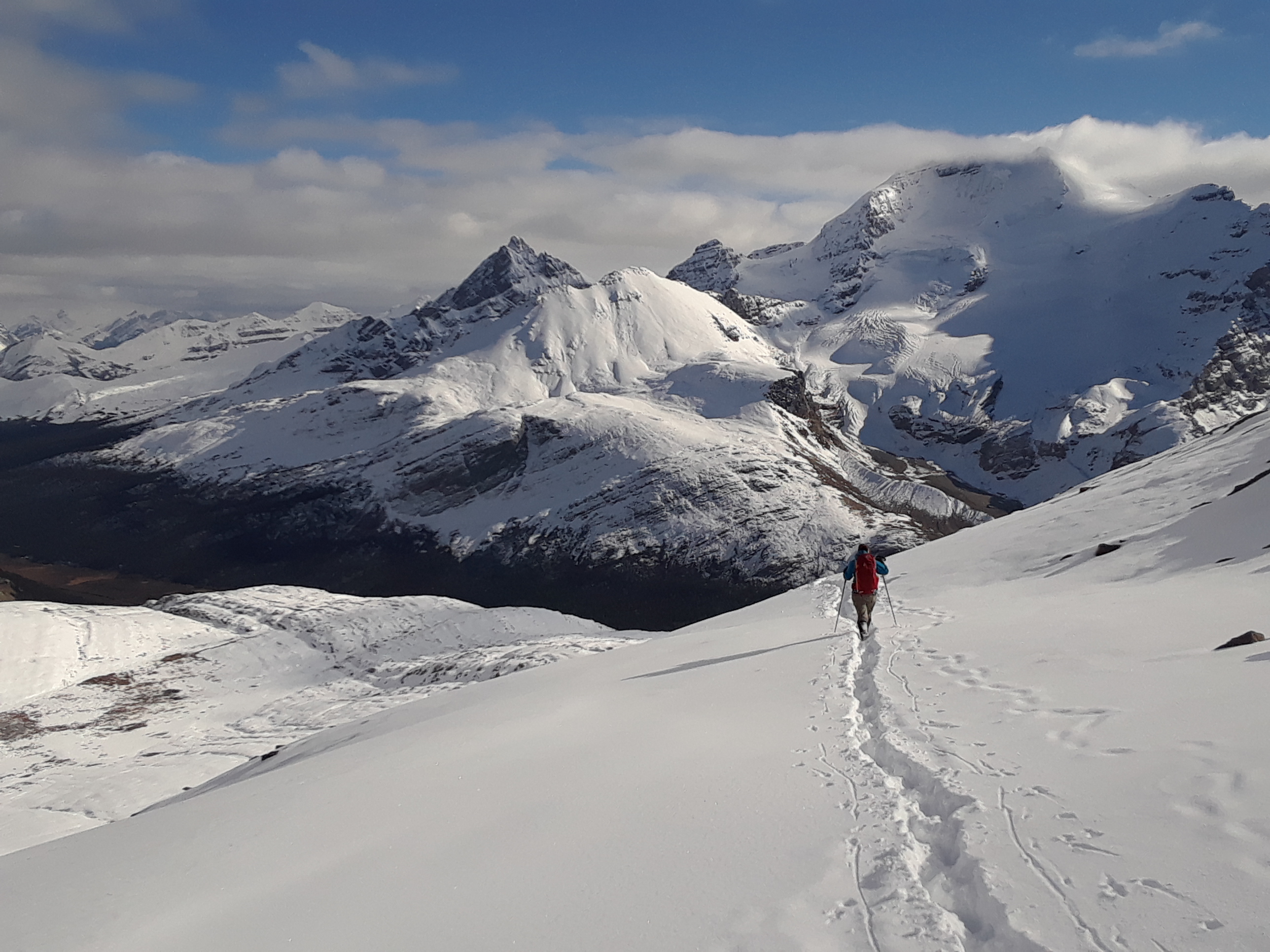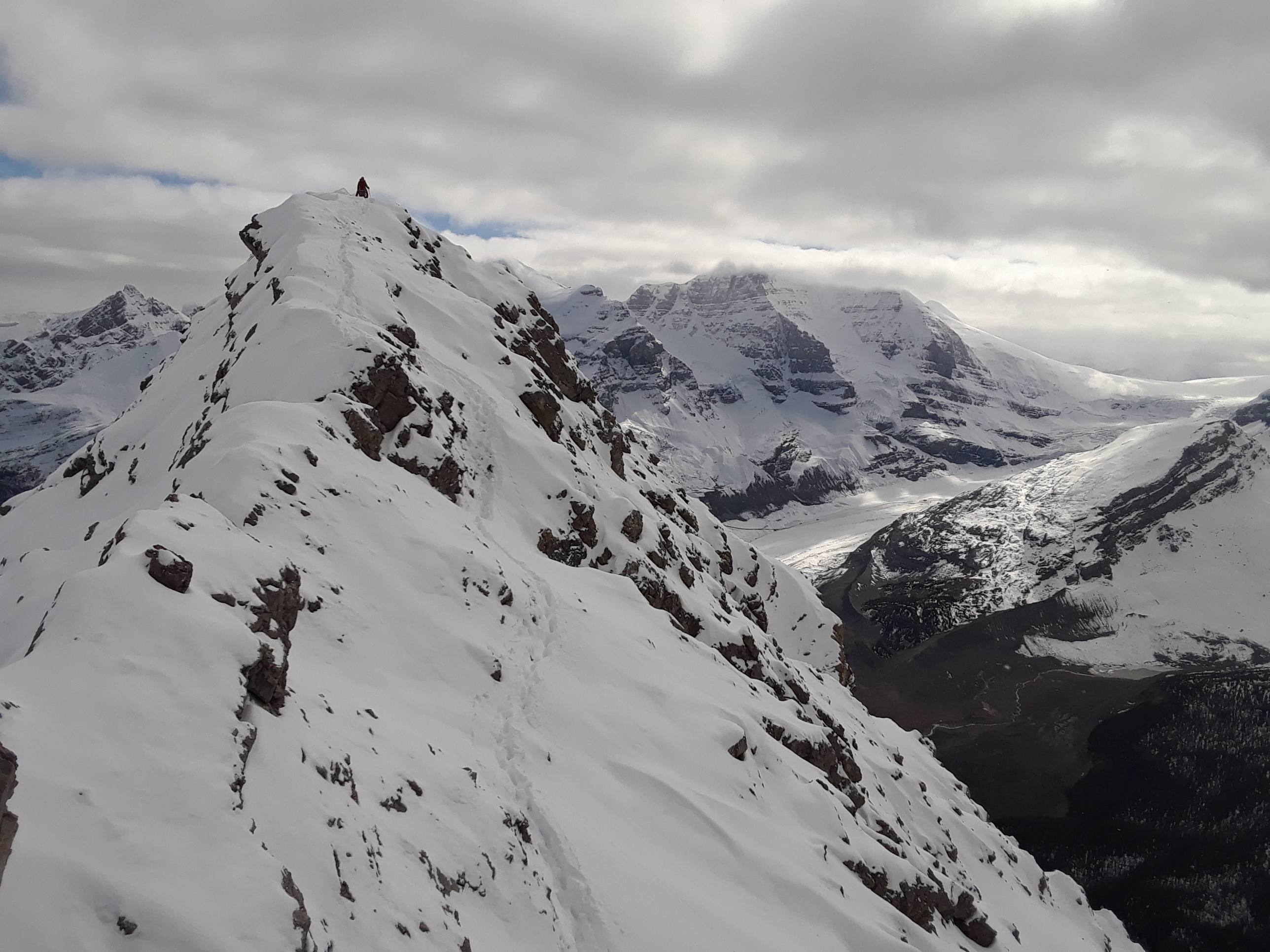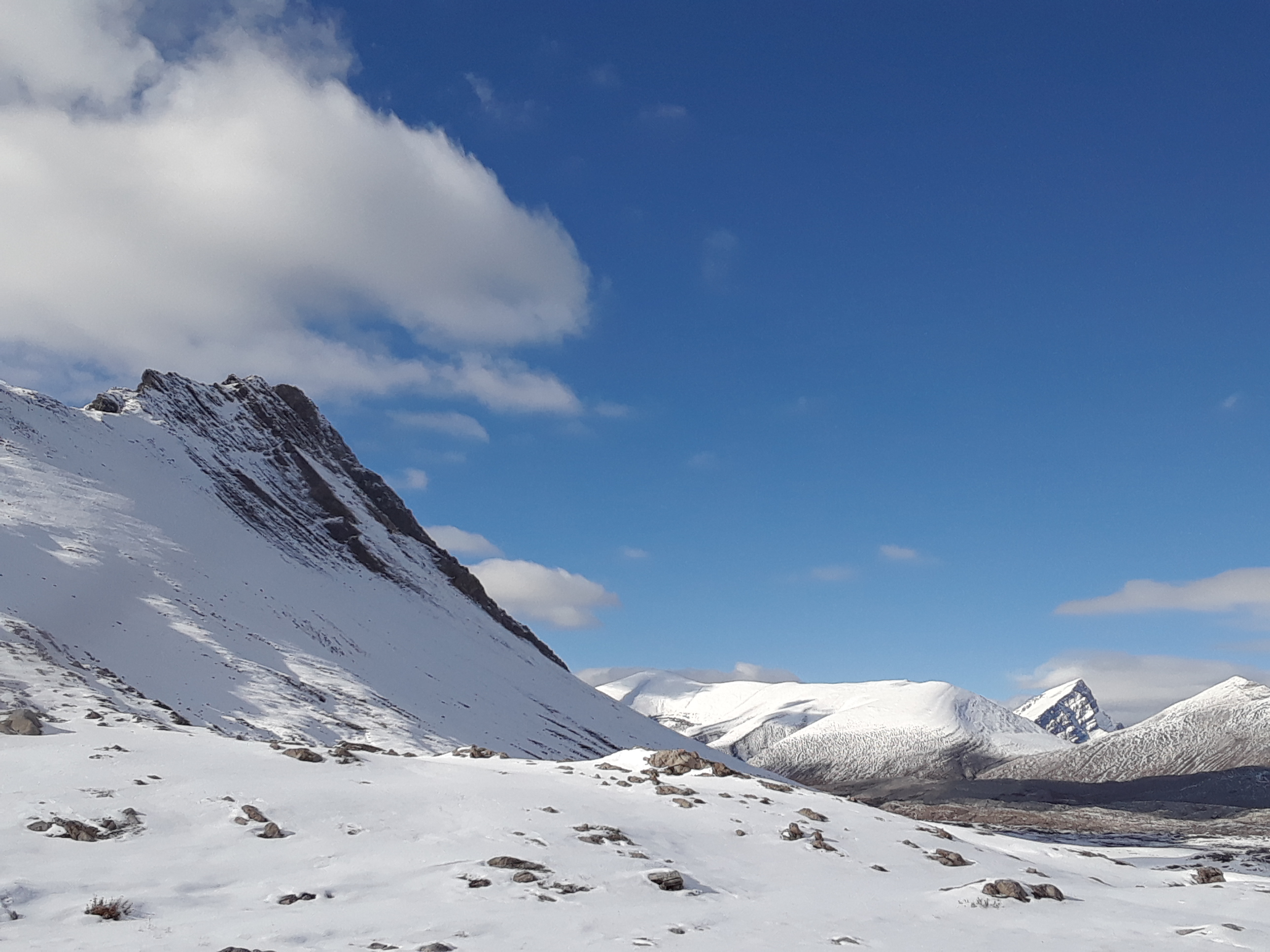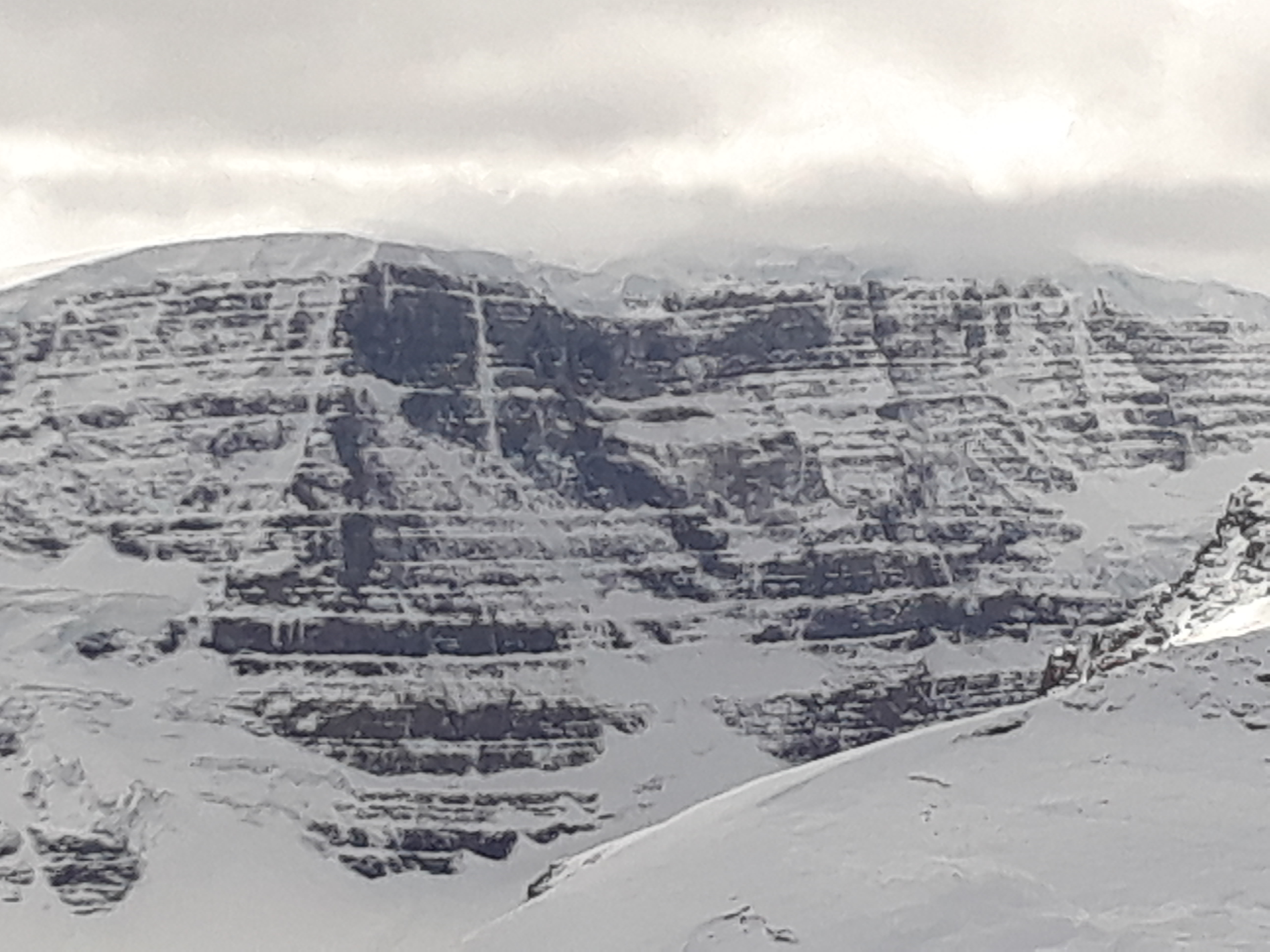On Wednesday Sep 26, a team climbed the East Ridge of Hilda. 15cm of dense snow in the forest by the road (2000m, shaded aspects) increased to a low density 1m snowpack by 3000m. The snow was semi consolidated on solar aspects; but less so on other aspects with deeper trailbreaking and more consideration given for avalanche potential. Several previous loose dry avalanches were observed on North aspects. No signs of instability were observed on the route travelled. However, snow became moist below 2400m in the afternoon, with one new size 1.5 loose snow avalanche observed from a steep North aspect at 2400m. Travel on snowslopes was minimized, particularly on the upper sections. One fresh, fridge sized cornice was easily triggered by throwing a small rock on it. Crampons and one ice tool each were very useful.
On Saturday Sep 29, a combined team from Jasper and Banff Visitor Safety climbed the SE Ridge of Mt Wilcox. There had been significant new snowfall in the alpine since Wednesday, and another dusting overnight. In the morning, biting NE breezes, an alpine low of -7, and thick cloud lent a very wintry feel to the snow-covered landscape; but after a rapid noon clearance, the strong September sun melted snow back to treeline on SW aspects (and turned the Wilcox Pass trail to shallow mud). Snow depths increased rapidly above 2400m, to 40cm of unconsolidated snow by 2800m. Similar to Hilda, this kept us more directly on the ridgecrest than usual, with predictably slower and more involved travel than during Summer conditions. Lower elevations still looked substantially snowy across the valley on shaded aspects. There was surprisingly little wind affect obvious on nearby peaks. No slab avalanches were observed, although the abundant loose snow will sluff or blow into windslabs with the slightest encouragement from the weather.
Across the valley on Snowdome, Slipstream and Polarity appeared formed from a distance, although Slipstream looked very snowy.
A large (Size 3) ice avalanche occurred midday from the seracs well to the left of Slipstream, running across the upper approach bench to Slipstream, with the toe reaching the lower approach traverse (to the lower ice curtain). There were no formed ice routes obvious on the peaks between the Icefields and Jasper.
In general, simple summer ridge routes with short approaches are now more challenging/entertaining, with less choss to negotiate but other hazards to manage. Meanwhile, the high peaks are liberally snow plastered, with higher-flow ice routes beginning to form here and there but generally looking uninviting for now, with deep, loose snow complicating trailbreaking, glacier travel and avalanche hazard management. Mondays snowfall warning is not likely to help in the short term...




